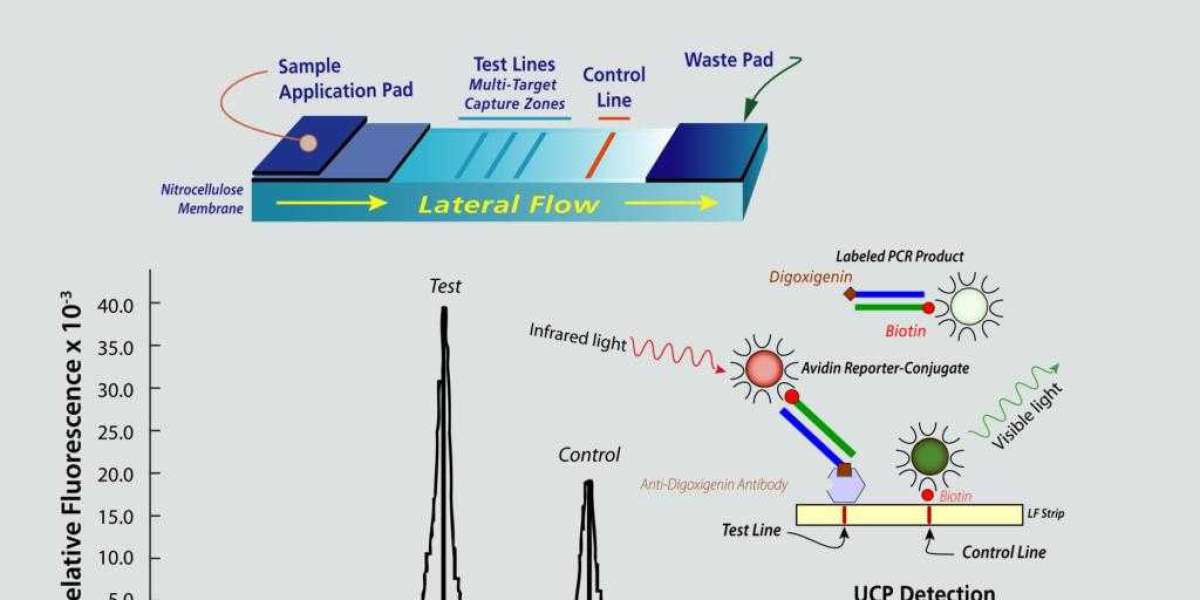Lateral flow assays, also known as lateral flow immunoassays, are a simple type of immunoassay used to detect the presence or absence of targeted substances in biological samples like blood or urine. They are most commonly used for medical diagnostics, food safety testing, and drug screening tests where rapid results are important.
Workings
A lateral flow Lateral Flow Assay uses a membrane with different labeled reagents deposited in lines or bands along its surface. The most important components of an LFA are:
- Sample pad: Absorbs the liquid sample and allows it to proceed along the membrane.
- Conjugate pad: Contains labeled detection molecules like antibodies tagged with gold nanoparticles or colored dye.
- Membrane: Made of nitrocellulose or nylon containing test and control lines. The test line contains immobilized capture antibodies specific to the target analyte. The control line contains antibodies that bind to the labeled detection molecules.
- Absorbent pad: Absorbs fluids after sample travels through the membrane.
When a liquid sample is applied to the sample pad, it flows laterally across the membrane via capillary action. Labeled detection antibodies bound to the target analyte as it flows. If the target analyte is present, it binds to the immobilized capture antibodies at the test line, forming a visible colored line. Labeled molecules also bind to the control line to show the test worked even if no target was detected. Results are typically read within 10-30 minutes.
Applications of Lateral Flow Assays
Some common applications of LFAs include:
Pregnancy Testing: Lateral assays use monoclonal antibodies that recognize the β-subunit of human chorionic gonadotropin (hCG) hormone present in urine early in pregnancy. This was one of the first commercial applications of LFA technology.
Drug Screening: Both illicit and prescribed drugs can be detected through LFAs in urine or oral fluid by using antibodies against drug metabolites. This allows for rapid on-site drug testing by employers, workplace monitoring programs, and law enforcement.
Infectious Disease Diagnostics: Pathogens like influenza viruses, HIV, malaria parasites, streptococcal infections can be detected through LFAs using specific antibodies. Portable kits have enabled point-of-care diagnosis in resource-limited settings without laboratory infrastructure.
Food Safety Testing: For quick screening of food products for contaminants like mycotoxins, allergens, veterinary drug residues during production, storage and transportation when laboratory testing is not feasible.
Get More Insights on- Lateral Flow Assay
For Deeper Insights, Find the Report in the Language that You want:













